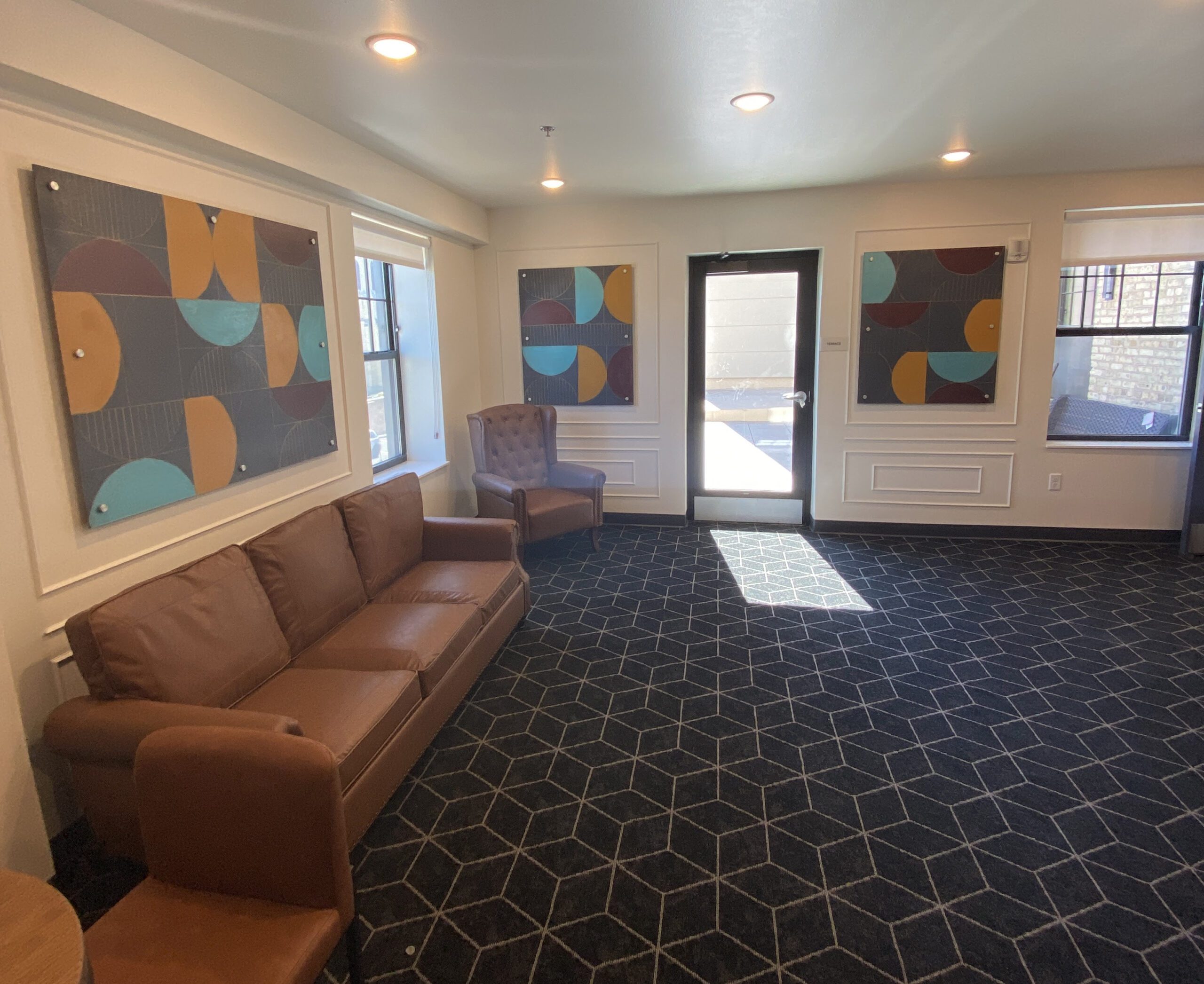For decades Jim Grafft of Janesville has traveled a road littered with controversy and delays. This week the final destination arrived — the rehabilitation of downtown Janesville’s Monterey Hotel.
Grafft bought the hotel out of bankruptcy in 1996. The former gem of the city’s downtown was vacant and in severe disrepair at the time. For example, there was no running water in the building.
Grafft’s vision for the property was a landmark building with high-end, market-priced residential units to serve as an anchor for future development on the West Milwaukee Street corridor. Grafft, after decades of work, has receive an occupancy permit from the city that will allow him to start renting out 51 apartments ranging from efficiencies to one- and two-bedroom.
“This is the first place I stayed at when I came here,” Grafft said during an interview in his new office at the Monterey. “I stayed in a room a few nights a week as I was looking to buy a home to live in.
“I became fascinated with the property and when it became available in bankruptcy, I bought it for somewhere around $350,000,” he said. “My intention, all along, was to restore the building to what it had been.”
While Grafft, his daughter, Britten, and his son, Riley, are credited with the Monterey Apartments project, there may not have been that opportunity without a bond sale led by Parker Pen founder George S. Parker in 1929.
Parker led a team of community leaders including Harry Bliss from the Janesville Gazette, Robert M. Bostwick and Robert Buggs. The Parker group reached its goal of $100,000 in just one week.
“I can’t emphasize enough how critical that fundraising was and how important George Parker was to the Monterey Hotel,” Grafft said. “Without his leadership, there would not be a Monterey Hotel.”
The name of the hotel was chosen in a contest organized by The Janesville Gazette. The winner, Monterey, was announced by the Gazette Aug. 23, 1929.
The location of the Monterey Hotel was once occupied by the Grand Hotel. The Grand was built by David Jeffris at the corner of Milwaukee and High streets to replace Williams House, which was previously know as the Borden House.
The Grand Hotel was torn down in 1929. The Janesville Chamber of Commerce then began efforts to bring another hotel to that location. Plans for a building called the Olson Hotel were made, but developers failed to raise the necessary capital.
It took only one year to complete all the planning and construction of the Monterey Hotel. Even by today’s standards, that’s a fast-track timetable.
If it only took a year to build the Monterey Hotel, why did it take 27 years to convert it to apartments? Grafft could go on for hours on that topic, but the answer boils down to a couple of thoughts.
“Yes, I could have simply repaired deficiencies when I bought the property and turned it into what might be referred to as a flop house,” he said. “I could have offered cheap rooms and started renting right away and make a lot of money, but that’s not what my vision was for that property.”
To realize his vision, Grafft needed extensive repairs, renovation and amenities required for luxury apartments, including on-site parking.
“Suffice it to say the city administration and I disagreed along the way on how best to save the Monterey,” Grafft said. “At one point the city issued a raze or repair order. The thought of demolishing the Monterey was unacceptable.”
While the Monterey Apartments project called for gutting of the interior with all new HVAC, plumbing, a sprinkler system and safety requirements performed in cooperation with Cardinal Capital Management, the exterior remains original. Grafft also made sure the Monterey’s history is preserved in various displays and features.
The second floor has a writing lounge dedicated to George S. Parke and the Parker Pen Company. The original ornate door knob trim from the hotel room doors has been preserved as peep holes on apartment entry doors. The terrazzo tile flooring in the lobby with brass trim has been preserved and restored to its original brilliance.
“It was not possible to retain a restaurant where The Orleans was located,” Grafft said. “But we have restored some of that area into one of the apartments and provided a photo of the original dining room behind closed doors. Throughout the building there are artifacts, photos and displays that pay tribute to the original hotel.”
During the nearly 30-year journey to preserve the Monterey, it was rare to see a smile on Jim Grafft’s face regarding the project. It was obvious the strain, turmoil and criticism were taking a toll.
But, during a meeting last week with Britten and Riley, Jim Grafft let his guard down. The moment was captured by Tom Edwards of Have Camera Wisconsin. Jim Grafft is a smiling man who saw his dream come true.
SOURCE: GazetteXtra


